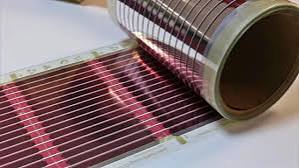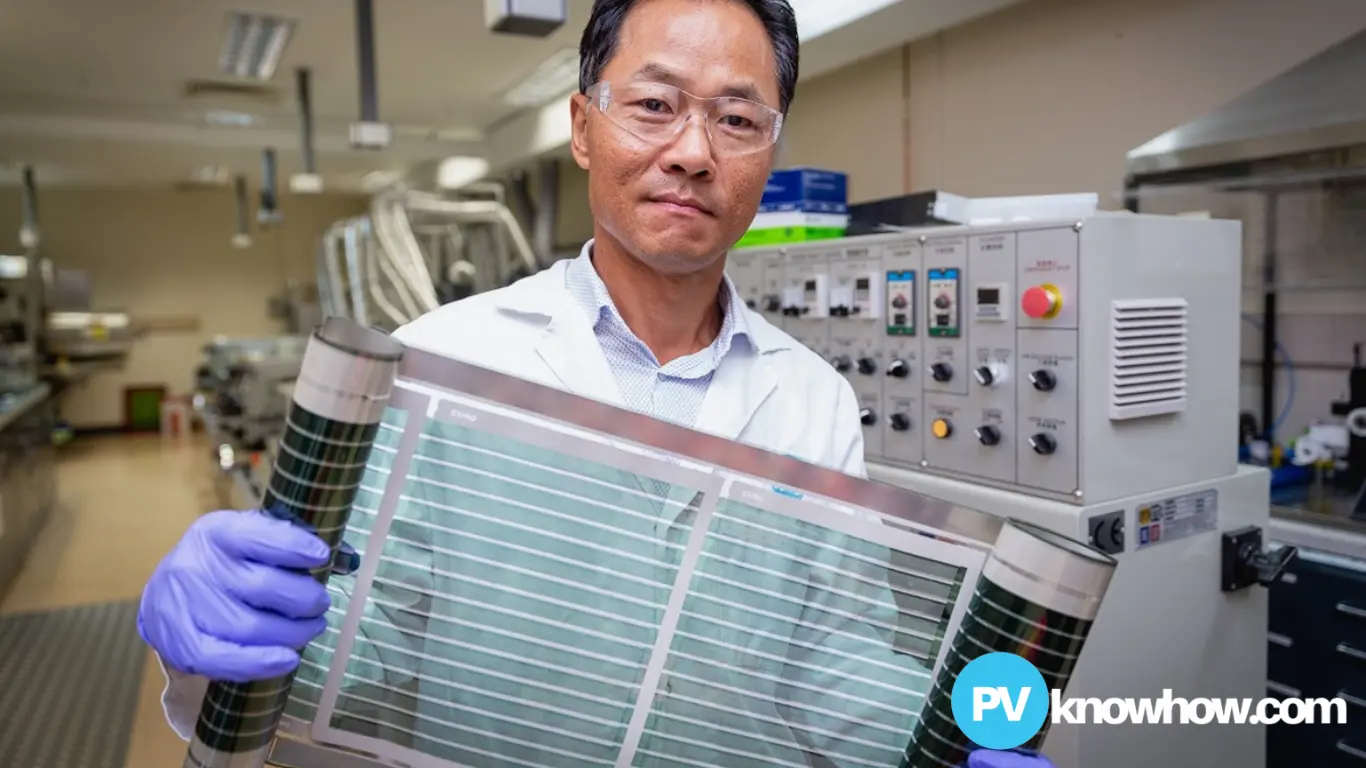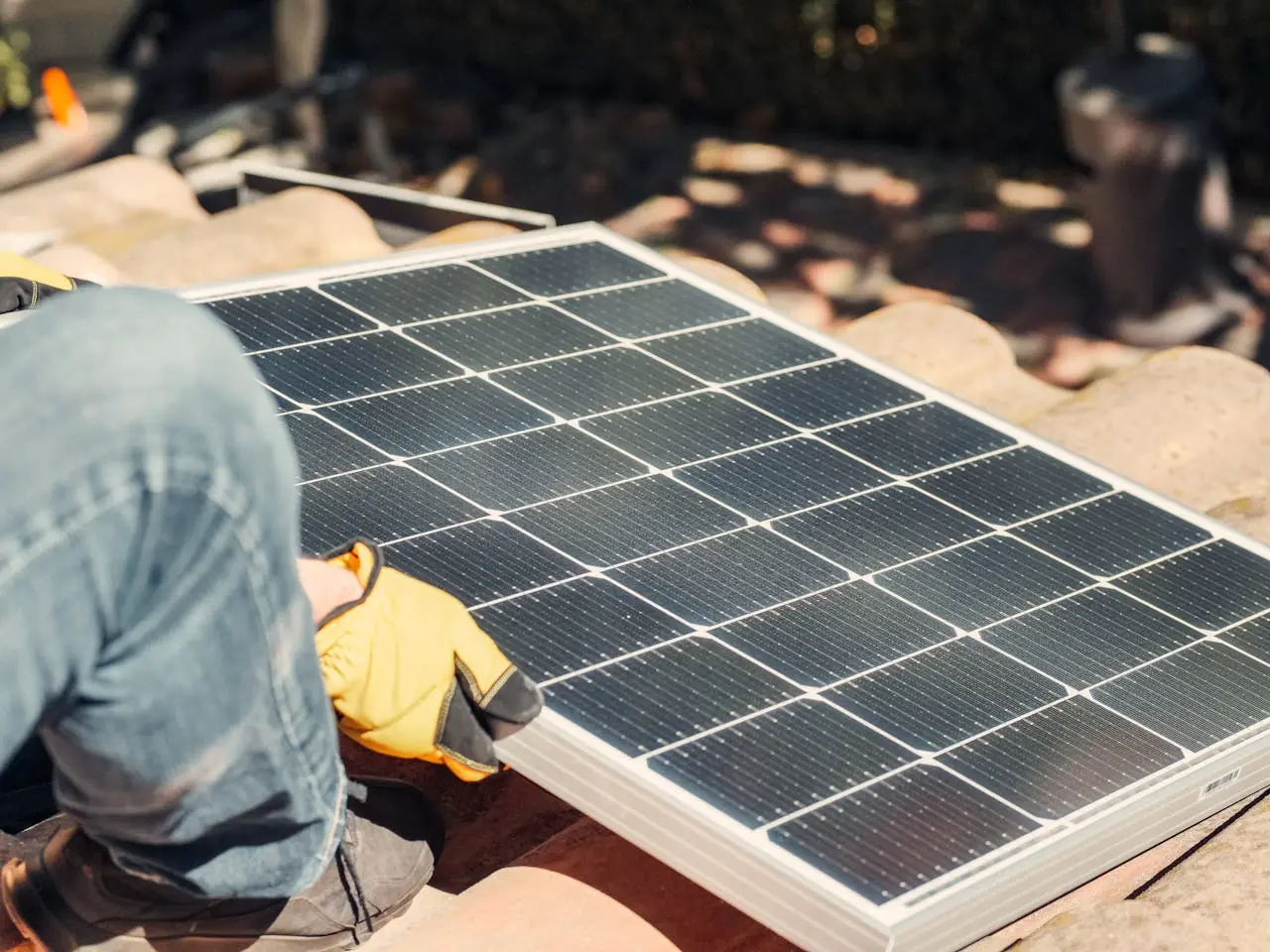Australian researchers — led by CSIRO — achieved 15.5% efficiency in small-area hybrid perovskite solar cells and 11% in large-scale modules using roll-to-roll fabrication. Published in Nature Communications, the study is the first to demonstrate fully printed hybrid perovskite solar modules made in ambient conditions.
Hybrid Perovskite Solar Cell Modules
The Commonwealth Scientific and Industrial Research Organisation (CSIRO) of Australia-led researchers achieved up to 15.5% efficiency on individual small-area cells and 11% efficiency on 50 cm² large-scale solar panels made of hybrid perovskite solar cells that were optimised through roll-to-roll fabrication.
The study, which was released by Nature Communications in its journal's 15th edition, claims to be the first demonstration of hybrid perovskite solar cell modules. These modules are made up of serially connected cells and were made entirely with industrial roll-to-roll printing equipment in ambient room conditions.
The research organization worked with researchers from the Universities of Sydney, Monash, Cambridge, and New South Wales to reach this significant milestone.
Development of Printed, Flexible Solar Cells
Printed solar cells are becoming a more viable option than silicon panels because of their flexibility, high efficiency, and falling cost. Their deployment adaptability stems from their ability to stick to a variety of surfaces, including clothes, wearables, cars, and structures.
Nevertheless, it has been difficult to increase output while retaining efficiency; many completely printed flexible solar panel manufacturers have only managed to achieve one or two percent efficiency.
An important advancement in the production of fully roll-to-roll printed, flexible solar cells with previously unheard-of levels of efficiency has been made by scientists, increasing the amount of power that can be produced from sunshine. While near-typical panel efficiency has been reached by small lab-scale solar cells, scaling them up for practical application remains a difficulty.
The real breakthrough — as highlighted by CSIRO — is the achievement of 11 percent efficiency for large-scale solar panels measuring 50 cm2 and composed of interconnected solar cells. This advancement marks a significant step towards the practical application of printed solar technology.

Perovskite and Printing Presses: Enhancing Energy Efficiency
The discovery of perovskite as a possible alternative material is driving innovation in solar panels, which have historically relied on silicon. When combined with ink and printed on industrial printers, perovskite presents a viable alternative to silicon in terms of cost and energy efficiency. It is portable and adaptable for a range of uses because of its lightweight and flexibility.
According to the research, perovskite cells can be mass-produced continuously by using a roll-to-roll printing method similar to newspaper printing. Recent developments have solved the efficiency and scalability issues that plagued previous roll-to-roll perovskite production, opening the door for large-scale, profitably produced perovskite solar cells.

Lead Researcher for Printable Photovoltaics Dr.Mei Gao displaying the fully roll to roll printed solarcells
Screening Solar Cells Spurs Innovation
Automated screening and fabrication methods are essential to achieving success and realising the full potential of our technology. According to CSIRO, the researchers were able to generate and test more than 10,000 solar cells each day thanks to a novel method; this is not possible with manual processes.
The research organisation also noted that flexible printed solar cells have a great deal of potential for both financial gain and environmentally friendly energy solutions. If widely used, they might help the industry achieve net-zero emissions and open up new business prospects.
They emerge as an economically and environmentally viable renewable energy option due to their lower costs and shorter energy payback times. Specialised carbon inks also lower manufacturing costs by doing away with the requirement for pricey metals like gold.



